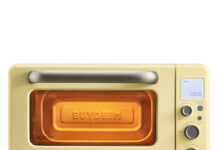You know that having the right gloves is important if you’re a welder. After all, welding is a dangerous profession, and the last thing you want is to get burned. But with so many different types of welding gloves on the market, it can be hard to know which ones are right for you. Welding gloves are an essential piece of safety equipment for every welder. They help to protect your hands from the intense heat and sparks generated by welding, and they also provide a good grip on your tools.
There are many different types of best gloves for welding available, so it’s important to choose the right pair for your needs. If you’re doing a lot of welding in tight spaces, for example, you’ll need a pair of gloves that offer good dexterity. If you’re doing heavy-duty welding, on the other hand, you’ll need a pair that can withstand high temperatures.
Whatever your needs, there’s a pair of welding gloves out there that’s perfect for you. This here will break down the different types of welding gloves and help you choose the best ones for your needs.
Types of Welding Gloves
Welding gloves are important for welders. They wear them to keep their hands safe from heat, sparks, and ultraviolet (UV) radiation. Different types of welding gloves are available. The welder chooses the right pair depending on the type of welding being done and their preferences. For example, gloves made with Kevlar or other heat-resistant materials are better suited for welding applications that generate a lot of heat, while gloves with leather palms are more flexible and provide better dexterity.
In addition, many welders prefer gloves with long cuffs extending past the wrist to further protect the skin from heat and sparks. It does not matter what type of welding you are doing. It is important to choose a pair of welding gloves that fit you well and allows you to move your hands freely. There are three main types of welding gloves: leather, Kevlar, and aluminized. Let’s take a closer look at each type:
Leather Welding Gloves :
Leather welding gloves are the most common type of welding glove. They’re made from cowhide or pigskin and offer good protection from heat, sparks, and UV radiation. Leather gloves are also very durable and can last for years with proper care. However, they can be expensive and are not always the best choice for welders with sensitive skin. Leather gloves are a very important tool for welders. They help protect the welder’s hands from the intense heat and sparks that come from welding. This will also help prevent burns. Not all leather gloves are the same though. For projects you do at home, you need gloves that are durable and comfortable. Leather welding gloves come from high-quality materials that can withstand the rigors of welding, and they’re also designed to fit snugly on your hands.
You need to be able to move your hands well and also keep them safe from the heat. So when you are looking for gloves to wear while welding, make sure to choose a pair that will do both of those things.
Kevlar Welding Gloves:
Kevlar welding gloves are from a synthetic material that can stand heat and flames. For many people, the idea of welding is scary. They think of intense heat, sparks, and dangerous materials. But welding can be safe and rewarding if you have the right equipment and are careful. One important piece of welding equipment is a good pair of gloves.
Kevlar welding gloves are designed to protect your hands from the intense heat and sparks generate by welding. They are made of a thick, durable material that can withstand high temperatures. In addition, Kevlar gloves are usually lined with a layer of insulation to further protect your hands. If you’re planning on tackling any welding projects, make sure to invest in a good pair of Kevlar welding gloves. Kevlar gloves offer excellent protection from heat and sparks but aren’t as durable as leather gloves. They’re also more expensive than leather gloves. However, they’re a good choice for welders with sensitive skin because they’re less likely to irritate.
Aluminized Welding Gloves:
Aluminized welding gloves come from a fabric coat with aluminum oxide. For many people, welding looks dangerous because of the sparks and heat. But you can stay safe by wearing the right gear, like aluminized welding gloves. These gloves are made from a material that reflects heat, so they will help protect your hands if you’re working with a welder or other hot tools.
Aluminized welding gloves not only help to prevent your hands from getting burned, but they also offer some protection against UV rays. This makes them a good choice for any project that involves working outdoors, such as welding a metal fence or repairing a roof. So whether you’re a professional welder or a DIY enthusiast, make sure to invest in a pair of aluminized welding gloves before tackling your next project.
This means that they reflect heat well and can be used in very hot temperatures. Aluminized gloves protect against heat better than leather or Kevlar gloves, but they are not as durable. They are also more expensive than both leather and Kevlar gloves. However, they are a good choice for welders who work in extremely hot environments.
Conclusion:
No matter what type of welding you do, it’s important to choose the right gloves for the job. Welding gloves are a type of clothing that helps protect your hands. They keep your hands safe from burns, sparks, and other things that could hurt them. There are lots of different kinds of welding gloves from Friday Rack, so it is important to choose the ones that will work best for you and that you will be comfortable wearing.
When used properly, welding gloves can help to prevent injuries and ensure that welders can work safely and efficiently. With so many different types of welding gloves on the market, it can be hard to know which ones are right for you. But by taking into account the different features of each type of glove, you can make an informed decision about which ones will work best for your needs. So don’t wait any longer—get out there and find the perfect welding gloves for your next project!
Read more interesting articles at inserior





































